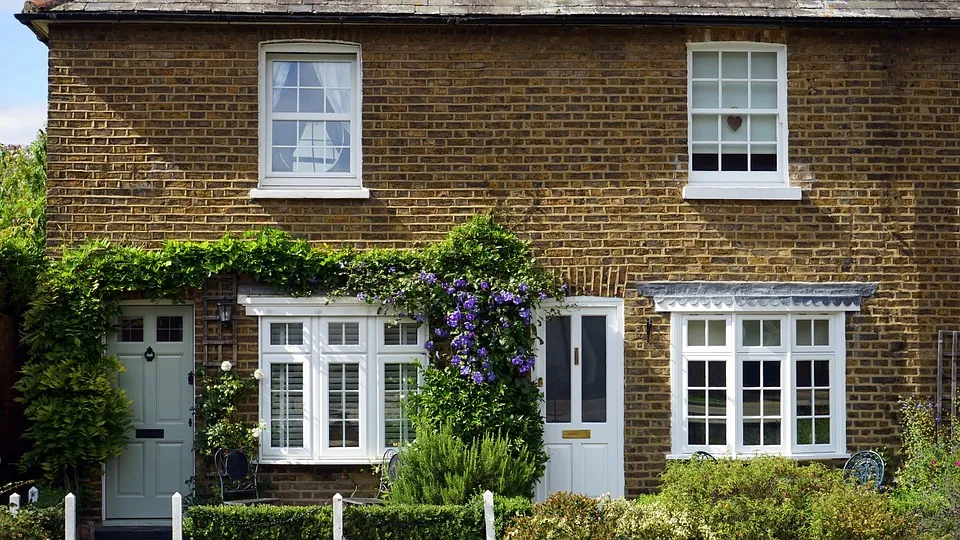April is supposed to herald the start of a British ritual: the house-buying season. Traditionally, it is the time when demand for homes picks up and the property supplements in the weekend papers are full of suggestions for sellers bidding to attract the interest of buyers.
But not this year. According to the latest bulletin from the Bank of England, repayments on existing mortgages in April were £1.4bn higher than new loans. This is unusual. Apart from during lockdown, it was the lowest figure since records began in 1993. The number of new mortgage approvals – loans agreed but not yet advanced – fell in April and were well below the average in the five years leading up to the pandemic.
There are a number of reasons for the lack of spring bounce in the property market. The availability of mortgages at ultra-low rates meant prices soared in the two years after the start of the pandemic, making it harder for new buyers to afford their first home. The inevitable pause for breath then happened to coincide with rising interest rates and a slowdown in the economy.
Get in touch with Mortgage Broker UK today to discuss your residential and Buy to Let Mortgage requirements.
These two factors – rising borrowing costs and sluggish growth – will continue to affect the market over the coming months. The Bank has raised interest rates from 0.1% to 4.5% in the space of 18 months – and looks certain to raise them further given the failure of inflation to fall as quickly as expected. Financial markets are pricing in three more quarter-point increases from Threadneedle Street by the end of the year. Mortgage lenders have responded to higher rates by raising mortgage rates and pulling some of their more attractive products.
So far, falls in house prices have been modest, with the average cost of a home down 3.4% on a year ago, according to the Nationwide building society. Even so, this was the biggest annual decline recorded since 2009, during the global financial crisis – and there is more to come. Activity in the housing market is likely to remain subdued for at least the rest of this year, and perhaps longer if – as seems probable – the first cuts in interest rates from the Bank don’t materialise until well into 2024.
Read about the UK Housing Market via our Specialist Residential & Buy to Let Division”
A full-blown housing market crash of the sort seen in the early 1990s looks unlikely, though. Net migration stood at more than 600,000 last year, and that will underpin demand. What’s more, the low level of unemployment means there are few forced sellers. The five-year slump in the first half of the 90s was caused by the dovetailing of 15% interest rates and a jobless total in excess of 3 million. The economy may still fall into recession this year as a result of interest rates staying higher for longer than previously envisaged, but there is no immediate prospect of a wave of newly unemployed owner-occupiers having to sell up.
All that said, it would be reasonable to expect a peak-to-trough fall in nominal house prices of at least 10%, which would amount to a real terms fall of more than 20% once inflation is accounted for. That’s a chunky fall. It’s also a welcome one.
Discover our Mortgage Broker services
Even though it’s been said before, it’s worth repeating that the UK is a country wrongly convinced that inflation-busting increases in house prices are a good thing. They are not. The flip side to over-investment in bricks and mortar is under-investment in other more productive uses of capital. The regular booms in the economy driven by consumers extracting and spending equity from the rising value of their homes are invariably followed by busts.
Those who benefit from rising prices tend to be better off people in older age groups. Those who lose out tend to be two over-lapping categories: renters and the young. Anybody under 35 who is saving up for a deposit on a flat will be glad of a drop in house prices.
Housing is likely to be a central issue at the next general election, with the two main parties each backing a different side. The Conservatives – who have all but dropped housebuilding targets – are lining up behind existing owner-occupiers. Labour has said it would impose targets and be prepared to build on parts of the green belt. It is also drawing up plans that would force landowners to sell plots of land for less than their potential market price in an attempt to stop land hoarding and so increase the supply of new homes.
Even if Labour actually goes ahead with its plan, it looks certain to be challenged in the courts. Currently, if a council wants to compulsory purchase a piece of farmland for housing development it has to pay a “hope” value. That’s the value not of the farmland but of the value of the farmland adjusted for planning permission, which is substantially higher.
By Larry Elliott
Source: The Guardian

